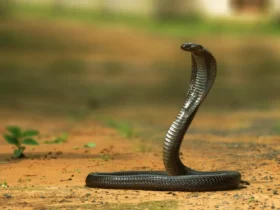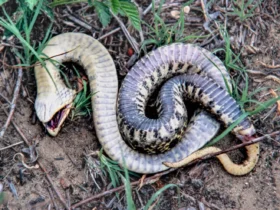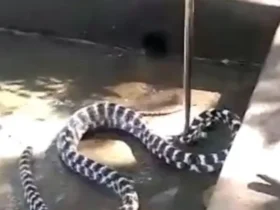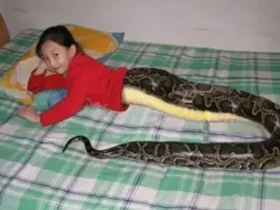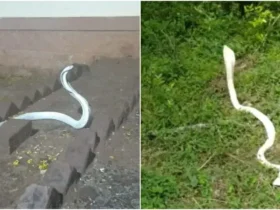Mice are a common rodent species in human life. Despite their small size, they have strong survival and adaptation abilities, allowing them to exist and reproduce in various environments.
How dangerous is mouse species?
Mice carry various disease-causing pathogens, and their feces, urine, and saliva can contain bacteria, viruses, and parasites.
When these pathogens enter the human body, they can cause diseases such as rat-bite fever, plague, pneumonia, and diarrhea. Additionally, mice can contaminate stored food and drinking water, posing a health risk to humans.
Mice are omnivorous creatures that can eat a variety of foods and crops, including grains, vegetables, fruits, etc. In agricultural fields and warehouses, mice dig tunnels, burrows, and nests, loosening the soil and severely impacting the growth of crops.

With their sharp incisor teeth, mice can chew on various materials such as electrical wires, pipes, wooden furniture, etc. Inside homes, mice also dig burrows and nests, causing instability in the structure of the house and posing a serious safety risk.
While complete eradication of the mouse species is challenging, effective control measures can be implemented to minimize their impact on human health and infrastructure.
Methods for eliminating existing mice
Chemical control involves the use of chemicals, poisons, sprays, and other measures to prevent and control mice. The use of conventional chemicals can quickly eliminate mice, but it also has significant environmental and human health risks. Therefore, it is necessary to closely control the types and dosages used to avoid harm to the environment and human bodies.
Biological control is the use of natural predators, carnivorous animals, and other biological agents to control mice. Biological agents employ non-toxic, non-polluting, and environmentally friendly methods. However, their effectiveness is generally not as significant as chemical control.
Electronic control utilizes specialized devices that emit sound waves or electric pulses to interfere with the physiological and behavioral habits of mice, aiming to repel them. This method is environmentally friendly and safe for humans, but its effectiveness is greatly influenced by the environment and the mice’s perception. In more complex environments, the effectiveness may not be ideal.

Rodent control robots are a new technology that often employs lasers or electrical pulses to directly eliminate mice. Due to their relatively high level of automation, prevention and control tasks can be carried out during nighttime and other periods when humans cannot access the area. Compared to chemical control, it has less harm to the environment and human health. However, the hardware cost of robots is relatively high, and certain technical support and maintenance are required.
Difficulties in mouse control
As a species with short lifespans, strong reproductive capabilities, and high survival rates, mice have a large population. According to statistics, over 20 million tons of food are spoiled or contaminated by mice worldwide each year. Therefore, completely eradicating mice is extremely challenging.
Mice have a strong reproductive capacity. A female mouse can give birth to 5-10 litters per year, with 4-12 offspring in each litter. And young mice can reach sexual maturity within 40-60 days, so a female mouse can produce hundreds of offspring in a year. Their rapid reproductive rate makes it very difficult to control the mouse population.

Mice also have strong survival abilities and can adapt to various environments, including cities, rural areas, deserts, dense forests, etc. They can also adapt to different diets and lifestyles.
Due to the mice’s strong adaptability to the environment, their adaptive characteristics need to be taken into account during mouse control.
One should not underestimate the intelligence of mice. They can quickly adapt and learn from their environment, while also being able to adapt and avoid preventive and control measures implemented by humans.
Therefore, appropriate strategies must be employed during mouse control to achieve the desired level of effectiveness.

How to escape from mice
Currently, it is very difficult to completely eradicate the mouse species, but there are still some ways to prevent their reproduction and spread. Utilizing natural predators is the oldest and most practical method to control rodent populations. Animals such as cats, dogs, and predatory birds are natural enemies of mice and can help deter them by encouraging the breeding of these predator species.
The advantage of this method is that it is environmentally friendly, non-toxic, and does not cause pollution. However, it has relatively significant limitations and requires suitable conditions and professional staff to implement.

Mice prefer to hide in dark, damp places, garbage areas, and other locations, so it is necessary to effectively control these environments to limit the living space of mice. Regular waste cleanup, repairing leaks, sealing cracks, and closing openings are all effective ways to control the mouse’s living environment.
The use of chemical agents is a commonly used method to control mice, but it poses environmental pollution and human health risks. Therefore, when using pesticides, it is important to carefully control the dosage, choose non-toxic and non-harmful options, and minimize the environmental and health hazards caused by chemical substances.
The use of electronic devices is a non-toxic preventive and control method. These devices are extremely easy to use but must be placed in the correct position to ensure that mice cannot escape. Different types of devices have different functions and effects. Some common electronic devices include mouse traps, electronic mouse repellents, and insect-killing lamps, among others.
In reality, some successful mouse control campaigns have managed to eliminate a large number, even the majority, of the mouse population. However, the surviving mice develop certain characteristics that make them better adapted—they can avoid the effects of baits, traps, and other lethal methods.

These surviving mice continue to reproduce, passing on their adaptive traits to their offspring. Therefore, at the present time, we still do not have a way to completely eradicate the mouse species.
To achieve comprehensive mouse control, we need to focus on long-term and sustainable goals, reducing the mouse population to an acceptable threshold using various tools such as rodenticides, dry ice, and even contraceptive measures to reduce their reproductive capabilities.

